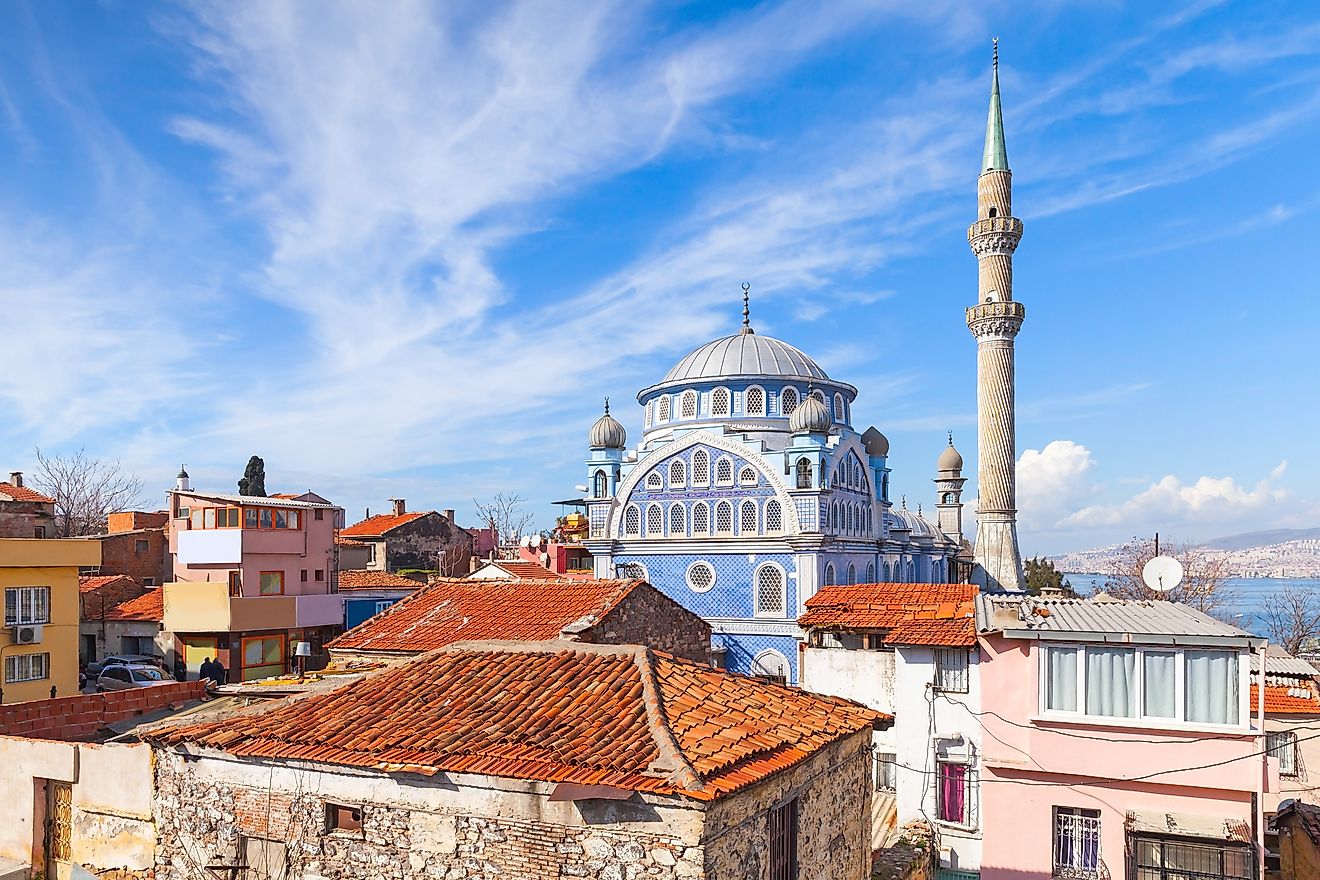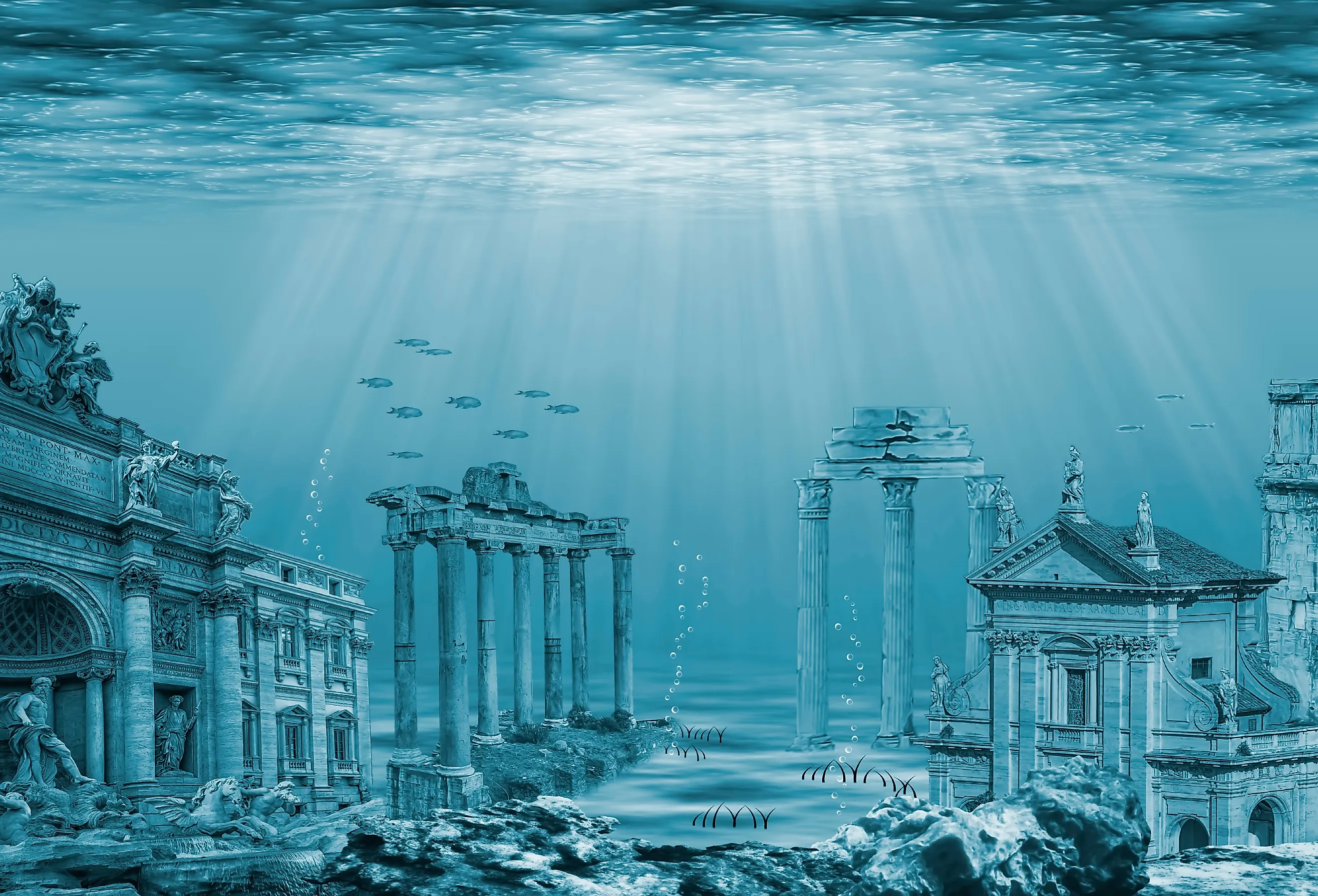
10 Ancient Places That Don't Exist
As humans, we are innately drawn to narratives that spark inspiration with tales of wonder, prosperity, and everlasting life. Throughout history, there are many stories of ancient places that contain little physical evidence. While these ancient places do not exist, they have captured the imagination of people over centuries and continue to fuel stories, art, and exploration.
Agartha
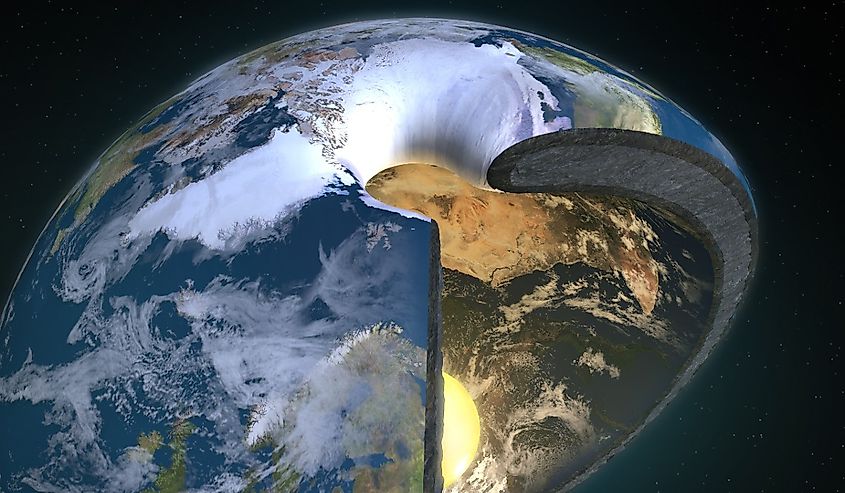
Agartha, sometimes referred to as Shambhala or Shangri-la, a legendary kingdom, is believed to be an intriguing subterranean world. According to lore, this mysterious realm exists inside the hollow Earth, inhabited by an advanced civilization and illuminated by a radiant inner sun. The concept of Agartha has been linked to various ancient myths, including Tibetan Buddhism and theosophical writings of the 19th century. These sources describe Agartha as a sanctuary of wisdom and enlightenment, populated by beings far more advanced than their surface-dwelling counterparts.
Allegedly accessible through secret entrances, like the Bermuda Triangle, Agartha is thought to possess advanced technology and hold the key to humanity's spiritual evolution. While skeptics dismiss Agartha as a fantasy, proponents argue that its existence cannot be entirely disproven. Despite the lack of physical evidence, Agartha remains a testament to the power of human imagination and the persistent draw of the mystery that continues to beckon adventurers and dreamers alike.
Atlantis
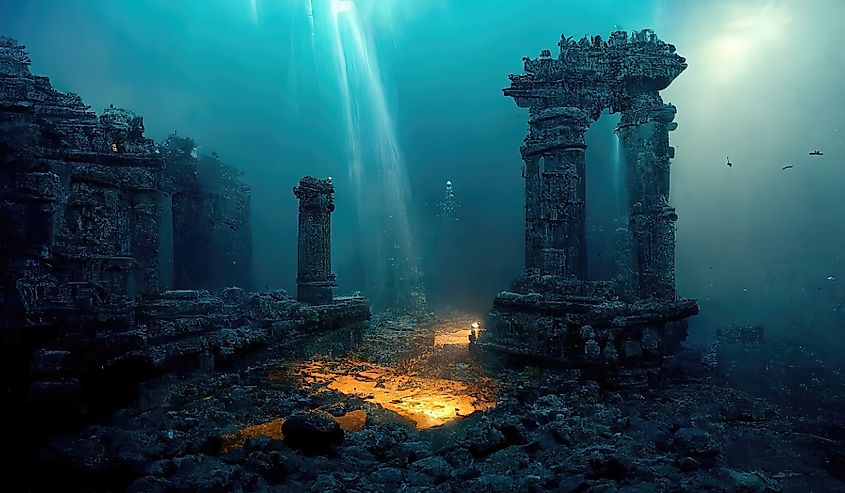
The ancient philosopher Plato wrote about Atlantis as a sophisticated naval civilization, renowned for its technological prowess and intellectual pursuits. The legendary civilization is said to be submerged beneath the ocean's depths, sparking imaginations in song and story for centuries. According to Plato's dialogues, "Timaeus" and "Critias," which are the origins of Atlantis, the island nation existed around 9,000 years prior to his time. The civilization's downfall, as described by Plato, was brought about by its hubris, leading the gods to punish Atlantis by submerging it following violent earthquakes and floods.
While many researchers believe Atlantis to be a myth, some suggest it could be a tale based on real events. Geological explorations have identified submerged structures in various parts of the world, fueling the idea that a catastrophe like a tsunami could have inspired the legend. As humans continue to study Earth's history, the enigma of Atlantis remains a symbol of human fascination with the past and the mysteries that lie deep within the ocean.
Avalon
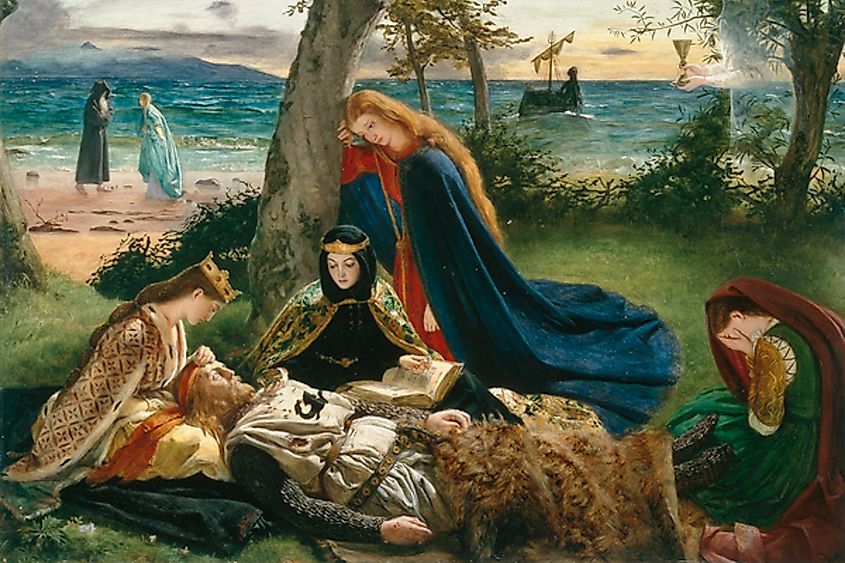
The enchanting legendary island of Avalon is said to be where King Arthur’s magical sword, Excalibur, was forged. Like other mythological places, scholars, historians, and artists have speculated about the proposed location of Avalon. The legend of Avalon, like the legend of King Arthur’s castle, Camelot, is linked to the Holy Grail with its miraculous healing powers. According to the stories, Avalon was the final resting place of King Arthur after his famous battle. Still, others tell a tale of his eternal life on the island.
Avalon’s elusive nature has captivated storytellers for centuries, with references dating back to medieval literature, like Geoffrey of Monmouth's Historia Regum Britanniae (Histories of the Kings of Britain). The immortal ruler of Avalon is believed to be Morgan, King Arthur’s supernatural sister, on this island of magical herbs. Whether as a symbol of a utopian paradise or a place of powerful transformation, Avalon's mystique endures.
Aztlán
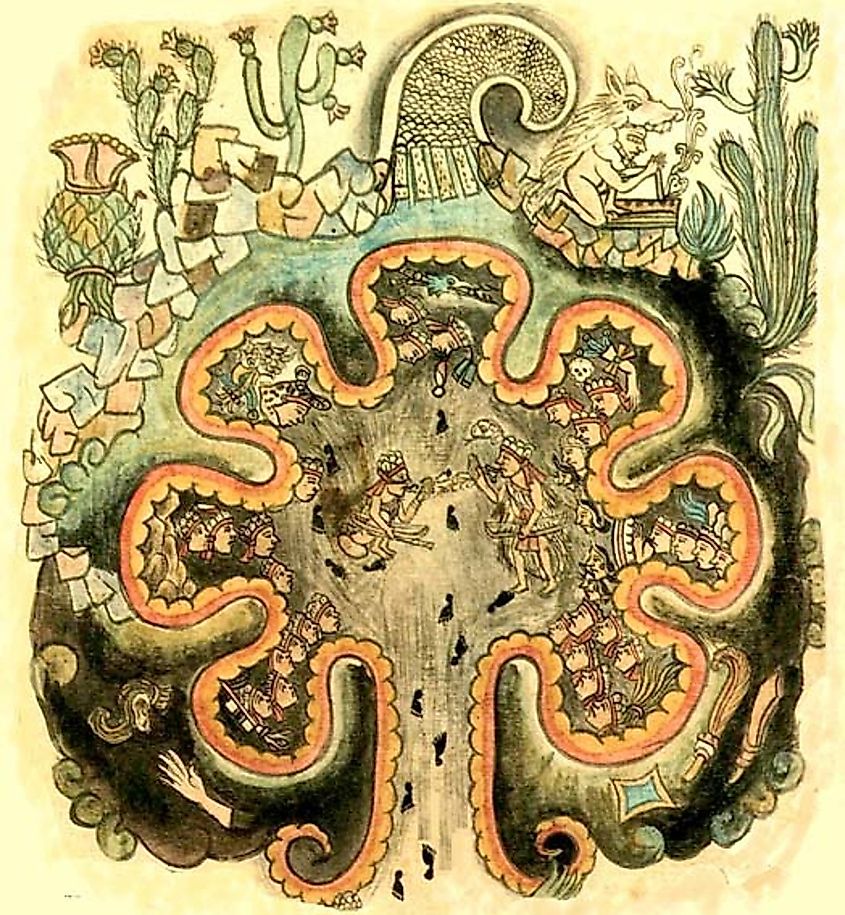
A legendary ancestral homeland of the Aztec people, Aztlán holds a significant place in Mesoamerican mythology and history. While no evidence exists of a geographical location, it symbolizes the Aztec migration and origin story. According to legend, the Aztec people’s predecessors were the last of seven tribes in Aztlán, instructed by the gods to embark on a journey to the promised land. That journey led them to settle in Tenochtitlan, now Mexico City, which was established in 1325.
The concept of Aztlán has enthralled historians and scholars, with theories suggesting it might have been in the northwestern part of Mexico or the southwestern United States. Aztlán remains a powerful cultural and ideological motif for modern-day Chicano and Mexican-American communities, representing a sense of shared heritage and resilience.
El Dorado
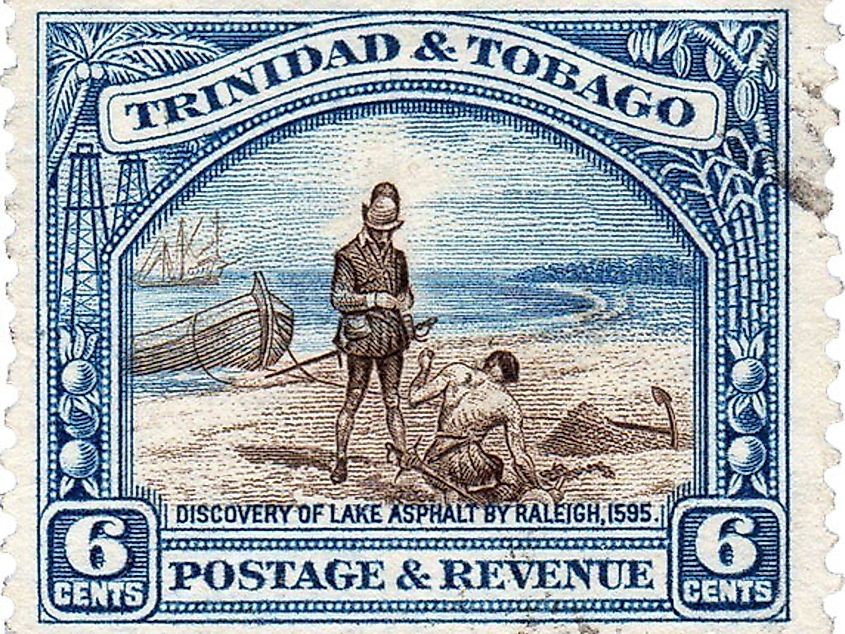
The legend of El Dorado has attracted explorers and treasure hunters for hundreds of years, fueling dreams of wealth and adventure. According to popular accounts, El Dorado, first referenced in 1531, was a legendary city richly adorned with gold and precious jewels, located somewhere in the uncharted depths of South America. Inspired by the stories of the indigenous Muisca people of Colombia, European explorers like Sir Walter Raleigh embarked on expeditions to discover this fabled city during the Age of Exploration.
While no physical evidence has confirmed the existence of a city of gold, the myth of El Dorado has left an indelible mark on history and culture. Symbolizing the pursuit of wealth and the allure of the unknown, El Dorado led to significant exploration and mapping of the South American continent. Today, the name El Dorado has come to signify anything representing fortuitous wealth and luxury, and the legacy remains a testament to the power of myth in shaping our perceptions and aspirations.
Hyperborea
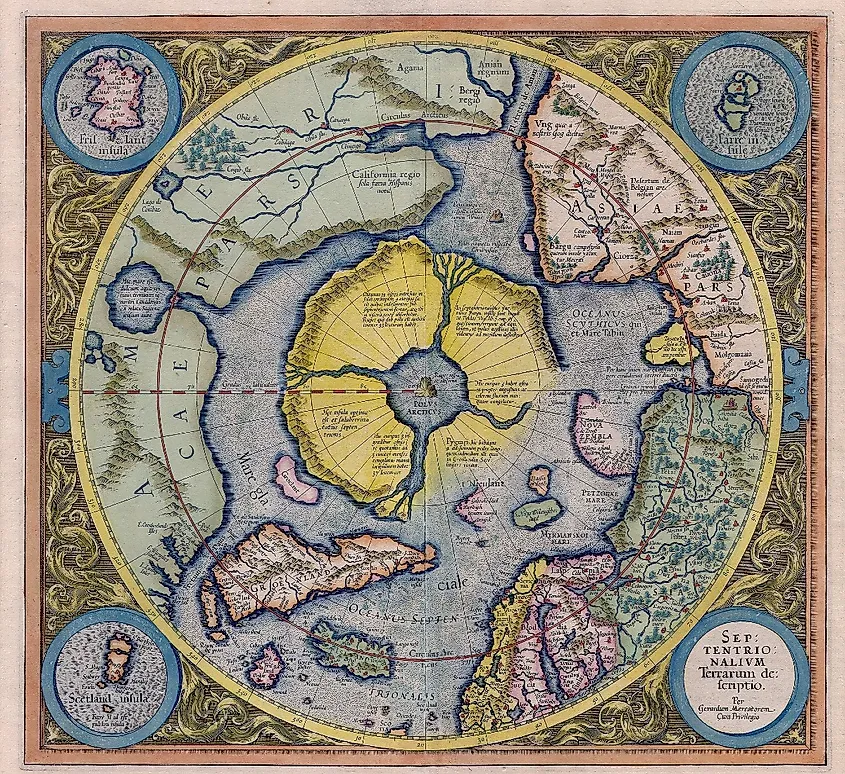
A far-north civilization in Greek mythology, Hyperborea was believed to be a paradise of eternal youth and happiness. Named for the god of the icy North Wind, Boreas, it may have been in what is today’s Central Europe, north of the Danube River, an area that the Greeks would have found comparatively frigid. While the exact location of Hyperborea remains a mystery, its presence in Greek mythology has left a lasting impact on literature and culture.
Contemporary scholars, drawing from ancient texts and archaeological evidence, continue to investigate the origins and significance of Hyperborea. The people of Hyperborea, known as Hyperboreans, worshipped the sun god Apollo and were blessed with lives of harmony and longevity. Modern interpretations of Hyperborea often focus on its symbolic implications rather than its real existence. Perhaps it is a reminder of humanity's fascination with exploration and the yearning for a perfect, unattainable utopia.
Lemuria
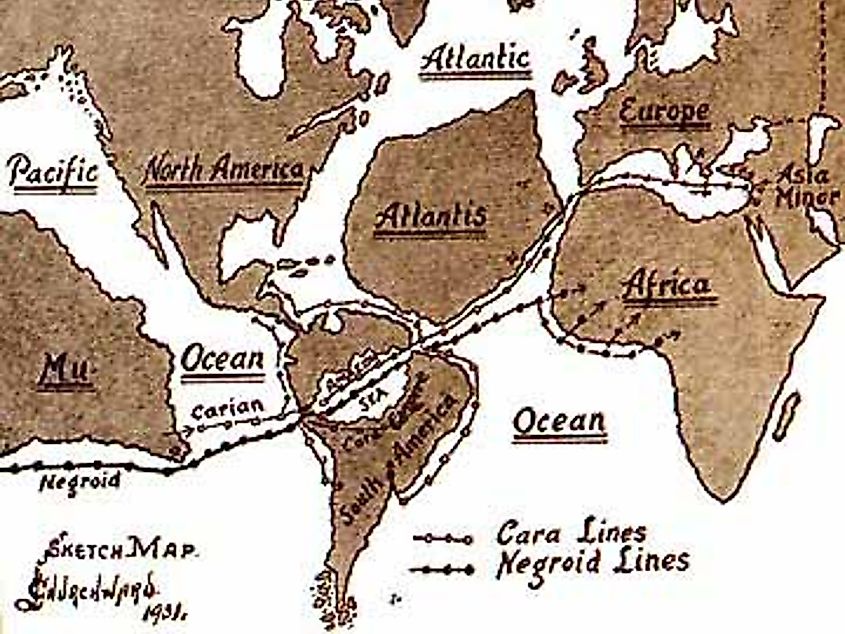
The lost continent of Lemuria was first theorized in 1864 by British lawyer and zoologist Philip Lutley Sclater, who proposed that there was once a triangle-shaped land bridge that connected Africa, India, and Western Australia. Home to the lemur primates, Lemuria is believed to have sunken beneath the Indian Ocean, forcing the lemur to migrate to Madagascar and then Africa and India.
Modern geological and biological evidence provides a new understanding of plate tectonics and continental drift to explain evolutionary patterns and the separation of these areas. However, Lemuria’s allure persists through spiritual and esoteric circles, particularly theosophy, attributing it to ancient civilizations or an ancient race known as Lemurians. While Lemuria’s existence remains confined to mythology, it underscores humanity’s fascination with the unknown and our ability to create stories that account for the gaps in our understanding of the natural world.
Lyonesse
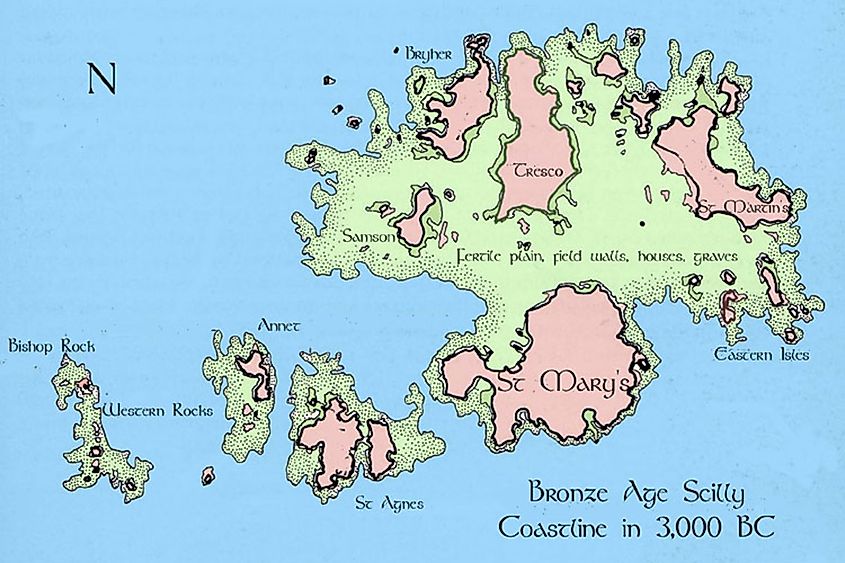
Within the Arthurian legend lies the mythological land of Lyonesse. According to medieval tales, this sunken kingdom once thrived off the southwestern coast of Britain in the English Channel. Though it now rests beneath the waves of the Atlantic Ocean, Lyonesse continues to captivate imaginations. Referenced in texts like the Prose Tristan and the works of Thomas Malory, Lyonesse’s origins intertwine with the tales of King Arthur and his Knights of the Round Table.
Fabled for its beauty and grandeur, the land’s tragic demise resulted from a storm that engulfed the kingdom. While archaeological evidence for Lyonesse remains scant, its existence lives on in folklore, inspiring countless artistic works. Whether viewed as a symbol of lost splendor or a testament to the passage of time, Lyonesse’s legacy endures.
Shangri-La
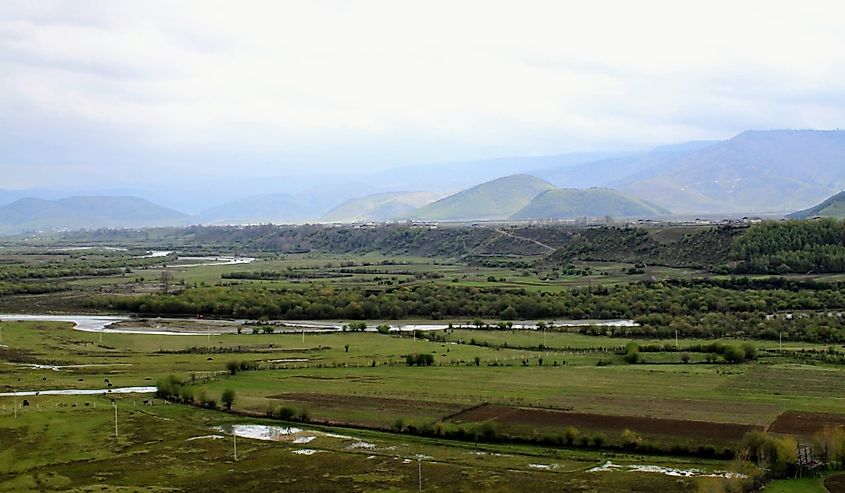
According to legend, Shangri-La is a hidden utopia nestled in the towering peaks of the Himalayas, where people live in harmony with nature and enjoy eternal youth. While the concept of Shangri-La was popularized in English author James Hilton’s novel Lost Horizon, its origins are traced back to Tibetan Buddhist scriptures. Shangri-La has become a symbol of earthly paradise and spiritual enlightenment, isolated from the world.
Representing a yearning for a simpler, more meaningful existence — a place untouched by the chaos of the modern world—Shangri-La continues to influence art, literature, and philosophy. The search for Shangri-La continues, and explorers and documentary filmmakers have claimed to have found the "real" Shangri-La in Tibet, China, India, and Nepal. Whether this utopia exists or not is unknown.
Thule
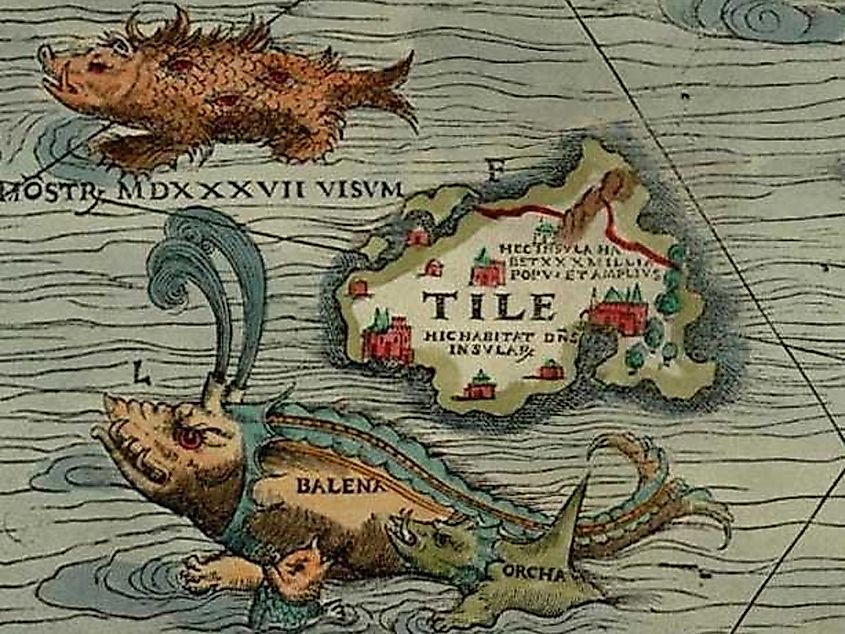
Mentioned in Greek and Roman literature, Thule means “any distant place beyond the borders of the known world.” This may explain why the exploration and adventure brand, Thule (pronounced Too-lee), founded in Sweden in 1942, chose the name to associate itself with the lost civilization. Described by ancient geographer Pytheas, Thule was a land of extreme northern latitudes, where the sun never fully set during the summer solstice. It was a place of unimaginable beauty and abundance.
Thule’s precise location and existence have been debated, with some associating it with Scandinavia, Norway, Iceland, and Greenland. British surveyor Charles Vallancey (1731–1812) argued that Ireland was the legendary Thule. The speculation continues. Symbolically, Thule is a far-off land or unattainable goal and potentially exists within each of us.
Whether these places ever existed or not is perhaps irrelevant. The fanciful imaginations of those who introduced them have struck a deep and enduring chord in our imaginations. Albert Einstein said, "Imagination is more important than knowledge. For knowledge is limited, whereas imagination embraces the entire world, stimulating progress, giving birth to evolution."
